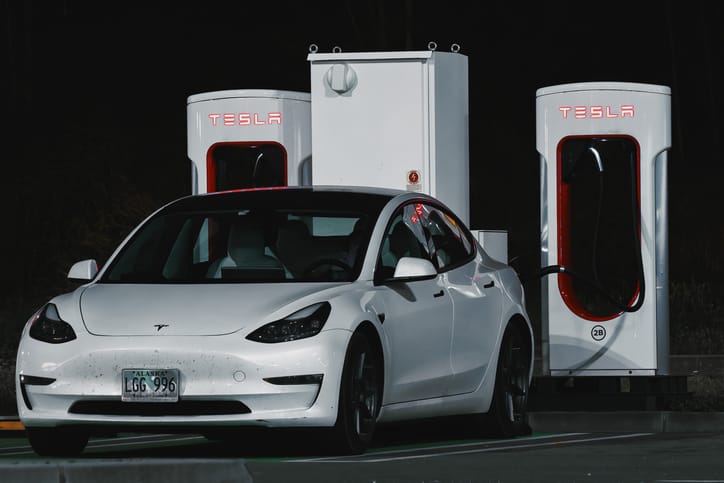Hydrogen vs. Electric Cars: The Future of Clean Transportation

The transportation sector is a significant contributor to global greenhouse gas emissions. As we strive for a cleaner future, electric (EV) and hydrogen fuel cell (FCV) vehicles have emerged as frontrunners in the race for sustainable transportation. Both technologies offer distinct advantages and disadvantages, making the choice for the future far from clear. This article delves into a comprehensive comparison of hydrogen and electric cars, analyzing their technology, infrastructure, fueling times, range anxiety, and potential impact on the transportation landscape.
Technological Under the Hood
- Electric Vehicles (EVs): EVs are powered by electric batteries that store energy from the grid. When plugged in, the battery pack charges, and the electric motor uses this stored energy to propel the car. EVs offer silent operation, high torque for quick acceleration, and regenerative braking that captures energy during deceleration, improving efficiency.
- Hydrogen Fuel Cell Vehicles (FCVs): FCVs utilize hydrogen gas as fuel. The hydrogen reacts with oxygen in the air within the fuel cell, producing electricity that powers the electric motor, similar to an EV. The only emission from the tailpipe is water vapor, making FCVs highly environmentally friendly.
Infrastructure Availability: A Tale of Two Networks
- Electric Vehicles: EV charging infrastructure is rapidly expanding. Public charging stations are becoming increasingly common, and many workplaces and homes are installing private chargers. However, the distribution of these stations can be uneven, with some areas lacking sufficient options for long-distance travel.
- Hydrogen Fuel Cell Vehicles: The Achilles' heel of FCVs is the limited availability of hydrogen refueling stations. These stations are scarce compared to gas stations, concentrated in specific regions, and often require significant investment to build and maintain. This lack of infrastructure creates a major barrier to widespread FCV adoption.
Fueling Times: Quick Refills vs. Strategic Charging
- Electric Vehicles: Charging times for EVs vary depending on the battery size, charger type, and remaining charge. Level 2 chargers, common at public stations and homes, can take several hours for a full charge, while DC fast chargers can replenish up to 80% of the battery in 20-30 minutes. However, these fast chargers are less prevalent and may require planning ahead.
- Hydrogen Fuel Cell Vehicles: Refueling an FCV is similar to filling a gasoline car. The process typically takes 3-5 minutes, offering a significant advantage in terms of convenience and time spent at the pump. This can be particularly appealing for long-distance travel or for users who dislike the idea of waiting for their car to charge.
Range Anxiety: How Far Can You Go?
- Electric Vehicles: Range anxiety, the fear of running out of power before reaching a charging station, is a major concern for EV drivers. While the range of EVs is steadily increasing, some models still have a limited range compared to gasoline vehicles. This can be a deterrent for long-distance trips or for users who frequently travel in areas with sparse charging options.
- Hydrogen Fuel Cell Vehicles: FCVs generally boast a longer driving range than most EVs, comparable to gasoline-powered cars. This is due to the high energy density of hydrogen gas. This extended range can alleviate range anxiety and make FCVs a more viable option for long-distance travel and those who require maximum flexibility.
Examples: Shedding Light on the Competition
- Tesla Model 3 (EV): A popular choice in the EV market, the Model 3 offers a range of 267 miles to 358 miles on a single charge, depending on the configuration. With Tesla's extensive Supercharger network, long-distance travel is becoming more feasible for EV drivers.

- Toyota Mirai (FCV): One of the leading FCVs, the Mirai boasts a driving range of around 400 miles on a single fill of hydrogen. However, the limited availability of hydrogen stations currently restricts its practicality for many users.

The Road Ahead: Challenges and Opportunities
The future of clean transportation hinges on overcoming the limitations of both technologies. Expanding the EV charging infrastructure is crucial to address range anxiety and encourage wider adoption. Additionally, advancements in battery technology are needed to improve range and reduce charging times.
For FCVs, the focus needs to be on developing a cost-effective and sustainable method of hydrogen production. Currently, most hydrogen is produced from fossil fuels, negating the environmental benefits of FCVs. Electrolysis using renewable energy sources like solar and wind is a promising solution, but further research and infrastructure development are necessary.
Conclusion: A Cohesive Future, Not a Binary Choice
While both EVs and FCVs offer promising solutions for clean transportation, it's unlikely that one technology will dominate completely. EVs are well-suited for everyday commuting and urban driving due to their established infrastructure and efficiency. FCVs, on the other hand, hold promise for long-distance travel, heavy-duty vehicles like trucks and buses, and applications where rapid refueling is critical. A future transportation landscape could see a mix of both technologies, with EVs catering to shorter commutes and FCVs filling the gap for longer journeys and commercial applications.
